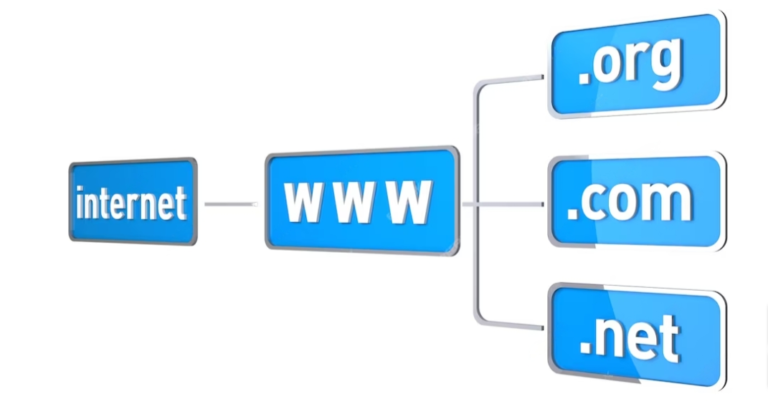10 Best Web Development Frameworks to Use (Backend and Frontend)
Web development frameworks are foundational tools crucial for building websites and applications efficiently. A Web development framework provides a structured foundation, pre-written code libraries, and utilities, enabling developers to streamline the development process. These frameworks, like React, Angular, and Vue.js on the frontend, and Django, Ruby on Rails, and Express.js on the backend, offer standardized structures, aiding in faster development and easier maintenance. They promote code reusability, enhance security, and ensure scalability. Moreover, frameworks often have robust community support, extensive documentation, and regular updates, facilitating collaboration and continuous improvement. By leveraging these frameworks, developers can create robust, secure, and feature-rich web applications, significantly reducing development time while ensuring higher performance and user satisfaction.
What Is A Web Development Framework?
Web development frameworks are pre-designed libraries of code, tools, and best practices that provide a structured foundation for creating web applications and websites. They offer a standardized way of building and organizing code, simplifying the development process for developers. These frameworks come with predefined functions, modules, and components, enabling developers to avoid starting from scratch and instead use pre-existing solutions for common tasks.
Web frameworks are like toolkits for building websites and applications. They offer ready-to-use components and pre-written code that developers can use to speed up their work. These frameworks help organize the code and structure the project, making it easier to manage. Imagine them as the blueprints and the building blocks that help developers create websites more efficiently. They bring consistency to coding practices, making it easier for teams to collaborate and maintain projects. With frameworks, developers don’t have to reinvent the wheel for every project—they can use established patterns and tools, saving time and effort. Overall, they’re like a guidebook that helps developers navigate the complexities of coding and build awesome websites and apps more smoothly. Website builders often leverage these frameworks to simplify the website creation process for non-developers.
Their importance lies in streamlining development by standardizing coding practices, enhancing efficiency, and promoting consistency across projects. Frameworks offer reusable code snippets, templates, and guidelines, making it easier to create complex functionalities without reinventing the wheel each time. They facilitate rapid development, reduce the likelihood of errors, and help maintain a clean, organized codebase. Ultimately, frameworks contribute to faster development cycles, improved scalability, and better maintainability of web applications.
Key pointers about web development frameworks:
1. Streamlined Development: Frameworks offer pre-built modules and libraries that expedite the development process, saving time and effort.
2. Consistency: They enforce best practices and coding standards, ensuring uniformity across the project and making it easier for multiple developers to work together seamlessly.
3. Security Measures: Many frameworks come with built-in security features, reducing vulnerabilities and providing a more secure development environment.
4. Scalability: They facilitate scalability by providing structures and functionalities that allow projects to grow without major reworking.
5. Community Support: Frameworks often have active communities contributing plugins, updates, and support, which can be immensely beneficial for developers facing challenges.
6. Cross-Platform Compatibility: Some frameworks enable the creation of applications that can run on various devices and platforms, enhancing their versatility.
The Best Backend Frameworks for Web Development
When it comes to web development, choosing the right backend framework can be a game-changer. Backend frameworks are the unsung heroes behind the scenes, powering the functionality and logic of web applications. They offer developers a toolkit to streamline development, manage databases, and handle server-side operations. In this guide, we’ll delve into some of the top-notch backend frameworks, highlighting their features, strengths, and ideal use cases. So, whether you’re a seasoned developer or just diving into the world of coding, let’s explore these frameworks that pave the way for powerful web applications using web development frameworks.
1. Django (Python)
Features:
Django is a high-level Python web framework renowned for its batteries-included approach. It offers a robust set of features, including an ORM (Object-Relational Mapping) system, a built-in admin panel for database management, and a secure authentication system. This framework adheres strongly to the “Don’t Repeat Yourself” (DRY) principle, minimizing redundancy in code and ensuring efficient development practices. Moreover, it follows the MVC (Model-View-Controller) architectural pattern, simplifying the separation of concerns.
Use Cases:
Django is ideal for building large-scale, complex applications that demand scalability, security, and versatility. It’s often used for content management systems (CMS), social networking platforms, and e-commerce websites due to its powerful built-in features, robustness, and its ability to handle heavy traffic loads effectively.
Also, read Best Practices for Website Speed Optimization: Boosting Loading Times
Community and Ecosystem:
Django boasts a vibrant community, offering extensive documentation, third-party packages, and a multitude of tutorials and resources. Its community actively contributes to enhancing its features and resolving issues, ensuring the framework’s continual growth and adaptability.
2. Express.js (JavaScript – Node.js)
Features:
Express.js is a minimal and flexible Node.js web application framework. It provides a robust set of features while allowing developers the freedom to customize according to project needs. One of its significant strengths is its middleware support, enabling developers to create scalable and efficient applications. The simplicity and flexibility of Express.js facilitate the creation of APIs and RESTful services with ease.
Use Cases:
Express.js is often employed in developing APIs, real-time applications, and single-page applications (SPAs) due to its capability to handle multiple routes efficiently. Its lightweight nature and ability to work seamlessly with Node.js make it a popular choice for developers seeking agility and speed in development.
Community and Ecosystem:
Express.js enjoys a vast community and a wide range of middleware and modules in its ecosystem. This extensive library of extensions allows developers to add functionalities and features to their applications efficiently.
3. Ruby on Rails (Ruby)
Features:
Ruby on Rails, often referred to as Rails, is a full-stack web application framework that prioritizes convention over configuration. It embraces the DRY principle, reducing manual configuration and repetitive coding tasks. It comes with various tools and features, including an ORM (Active Record), scaffolding tools for quick prototyping, and follows the MVC (Model-View-Controller) architectural pattern, promoting code organization and maintainability.
Use Cases:
Ruby on Rails is favored for its ability to support rapid development cycles, making it suitable for startups and projects requiring quick prototyping or MVP (Minimum Viable Product) development. It is widely used in applications such as marketplaces, content management systems (CMS), and social networking sites.
Community and Ecosystem:
Rails has a strong and supportive community that contributes to its expansion and refinement. It offers numerous gems (libraries) that extend its functionality, simplifying common development tasks and contributing to Rails’ overall efficiency.
4. Flask (Python)
Features:
Flask is a micro-framework written in Python that emphasizes simplicity and minimalism. It comes with a minimal core and provides developers the flexibility to choose and integrate various extensions based on their project needs. Flask does not enforce any specific dependencies or project structures, allowing developers to build applications as per their preferences.
Use Cases:
Flask is suitable for building small to medium-sized web applications, Types of APIs, and prototypes due to its minimalistic nature and ease of learning. Developers who prefer a lightweight framework with the freedom to add features as needed often opt for Flask.
Community and Ecosystem:
Flask has a growing community that contributes extensions and plugins to enhance its capabilities. Its modular design allows developers to pick and choose the components they require, ensuring a lightweight and tailored development experience.
5. Laravel (PHP)
Features:
Laravel is a PHP web application framework renowned for its focus on developer productivity and elegance. It offers a rich set of features, including the Eloquent ORM, Blade templating engine, and a robust CLI (Command Line Interface) tool called Artisan. Laravel emphasizes developer-friendly syntax and conventions, streamlining the development process.
Use Cases:
Laravel is suited for projects requiring rapid development, such as content management systems (CMS), e-commerce platforms, and enterprise-level applications. It provides a structured and organized approach to building web applications, allowing developers to create scalable and maintainable solutions.
Community and Ecosystem:
Laravel boasts a thriving community and a vast ecosystem of libraries and packages. The community actively contributes to its growth by developing extensions, tutorials, and resources, making Laravel a popular choice among PHP developers.
These backend frameworks offer distinctive features, advantages, and communities supporting their development, making each one suitable for specific project requirements and developer preferences. Choosing the right framework often involves considering factors such as project complexity, scalability, ease of development, and community support.
The Best Frontend Frameworks For Web Development
When it comes to building stellar web applications, choosing the right frontend framework can be a game-changer. Let’s dive into a roundup of top-notch frontend frameworks like React, Angular, Vue.js, Svelte, and Ember.js. These frameworks aren’t just tools; they’re the foundation for crafting stunning user interfaces and interactive experiences on the web. Explore their unique features, advantages, and suitability for various projects.
React:
Overview: React is an open-source JavaScript library developed by Facebook, providing developers with a flexible platform to build user interfaces. It utilizes a component-based architecture, enabling the creation of reusable UI components.
Features: React’s core features include the Virtual DOM, which enhances performance by minimizing unnecessary re-rendering, JSX for combining HTML with JavaScript, and the uni-directional data flow that ensures predictable behavior.
Advantages: React offers high performance due to its efficient handling of the Virtual DOM, which leads to faster rendering. Its strong community support and ecosystem of libraries like Redux and React Router contribute to its popularity.
Suitability: React is ideal for developing single-page applications (SPAs), large-scale applications with dynamic content, and scenarios where component reusability is crucial.
Angular:
Overview: Angular, developed by Google, is a robust JavaScript framework used for building web applications. It employs TypeScript, a superset of JavaScript, which enhances code quality and maintainability.
Features: Angular’s key features include two-way data binding, dependency injection, and a modular structure that allows for building large-scale applications. It provides a complete solution with features like forms handling and HTTP client.
Advantages: Its extensive tooling support, strong community, and well-structured architecture make Angular suitable for enterprise-level applications. Its extensive documentation and built-in features streamline development processes.
Suitability: Angular is preferred for large-scale applications requiring a high degree of structure, complex user interfaces, and projects where ready-made solutions for various functionalities are necessary.
Vue.js:
Overview: Vue.js is a progressive JavaScript framework known for its simplicity and ease of integration. It is incrementally adoptable, making it suitable for building small to large-scale applications.
Features: Vue.js offers a simple and intuitive API, reactive components, and a flexible ecosystem. It uses a virtual DOM for efficient rendering and supports server-side rendering for SEO optimization.
Advantages: Vue.js stands out due to its gentle learning curve, allowing developers to gradually adopt it into projects. Its versatility, lightweight nature, and straightforward integration make it a popular choice among developers.
Suitability: Vue.js is ideal for startups, rapid prototyping, and applications where quick deployment and flexibility are essential.
Svelte:
Overview: Svelte is a compiler-based JavaScript framework that shifts the work from runtime to build time. It compiles components into highly optimized vanilla JavaScript at build time.
Features: Svelte’s key feature is its compilation-based approach, resulting in smaller bundle sizes and improved runtime performance. It offers reactivity without the need for a virtual DOM and simplifies complex animations and transitions.
Advantages: Svelte stands out for its approach to reducing boilerplate code, resulting in more efficient and performant applications. Its simplicity, lightweight output, and ease of use contribute to its appeal.
Suitability: Svelte is suitable for projects that require high performance, especially when dealing with animations, transitions, or applications with limited resources.
Ember.js:
Overview: Ember.js is a JavaScript framework designed for creating ambitious web applications. It follows the convention over configuration principle, emphasizing stability, and productivity.
Features: Ember.js offers a robust set of tools, a strong CLI (Command Line Interface), and an opinionated structure that enforces best practices and conventions. It provides solutions for routing, data management, and testing out of the box.
Advantages: Its convention-based structure and built-in best practices enhance productivity by reducing decision fatigue and promoting consistency. The framework’s extensive ecosystem of addons and libraries further simplifies development.
Suitability: Ember.js is suitable for projects that require a structured framework, where maintaining code consistency and embracing best practices are crucial.
Each of these frontend frameworks has its unique strengths, and the choice depends on project requirements, scalability needs, team expertise, and personal preferences. Understanding their key features and suitability aids in making informed decisions when selecting a framework for web development.
Wrap Up
In wrapping up, the right web development framework can truly make or break a project. Whether you’re focused on the backend or frontend, these tools are essential for smoother, more efficient coding. Picking the best framework depends on your project’s specific needs. Do some digging, weigh the options, and choose wisely. Remember, each framework has its perks, so explore, experiment, and find the one that fits your project like a glove. Happy coding!
FAQs
1. What is the role of a web development framework?
– A web development framework is a pre-built structure that aids developers in building web applications. It provides a foundation with libraries, tools, and utilities to streamline the development process.
2. Which factors should influence the choice of a framework?
– Consider factors like project requirements, scalability, ease of learning, community support, performance, and compatibility with your development team’s skills.
3. What is the difference between frontend and backend frameworks?
– Frontend frameworks like React or Angular focus on the user interface and interaction, while backend frameworks like Django or Express.js deal with server-side logic, database management, and application infrastructure.
4. Are web development frameworks free to use?
– Many web development frameworks are open-source and free to use, while some offer premium features or support for a fee. However, the majority of popular frameworks are open-source and free.
5. How often should developers update frameworks?
– It’s recommended to keep frameworks updated regularly to benefit from new features, security patches, and performance improvements. However, extensive testing is crucial before updating in production environments.
6. Can one framework serve both frontend and backend needs?
– Some frameworks, like Node.js, can be used for both frontend and backend development. However, most frameworks specialize in either frontend or backend tasks.





![6 Best Free Website Builders to Check Out in 2023 [+Pros & Cons]](https://marketscrawl.com/wp-content/uploads/2023/11/construction-building-architecture-concept-1-1-768x558.jpg)

